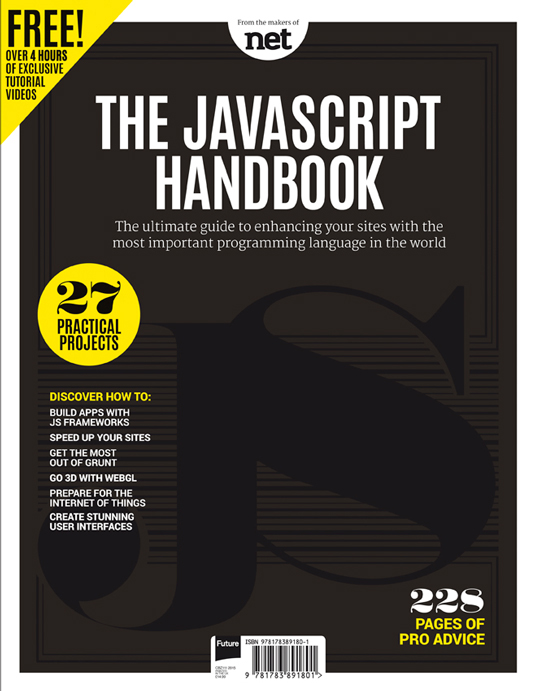Which JavaScript build tool should you choose?
Mark Dalgleish takes a closer look at Grunt and Gulp, two competing JavaScript build tools.
Grunt is a Node.js-based task runner, most commonly used for frontend projects. Gulp is a lightweight build tool, using Node’s stream API to speed up and simplify complex build processes.
We line up the two JavaScript build tools and reveal which you should use in your next projects.
Philosophy
Grunt builds are mostly made up of JSON-like configuration rather than code. Instead of writing a programmatic build script, you supply options to a series of pre-packaged build tasks inside a Gruntfile.
Gulp takes the opposite approach, favouring code over configuration. There are only a few simple methods you need to create a working Gulpfile. Due to its streaming API, builds are extremely fast.
Plugins
Grunt has a large, growing community surrounding it. There are currently almost 2,300 plugins available, supporting common tasks like static asset compilation and deployment.
Gulp still has a relatively young ecosystem, but there are already around 300 plugins that have been published to npm. A core benefit of Gulp’s streaming API is that plugins are small and easily connectable.

Speed
Tasks run synchronously by default. Each task is individually configured to interact with the file system. This I/O-heavy approach can cause performance degradation if your project grows too large. Grunt plugins try to improve the situation, but it’s not ideal.
Daily design news, reviews, how-tos and more, as picked by the editors.
Tasks run synchronously by default. Each task is individually configured to interact with the file system. This I/O-heavy approach can cause performance degradation if your project grows too large. Grunt plugins try to improve the situation, but it’s not ideal.
Scaffolding
Yeoman, a very popular JavaScript scaffolding tool, has first-class support for Grunt. The vast majority of Yeoman generators create a project that includes a Gruntfile. There is even a Yeoman generator the can scaffold Grunt plugins.
The Yeoman team are prototyping the use of Gulp in their official generators. Yeoman was instrumental in the creation of many Grunt plugins, so this process is likely to be repeated with Gulp. Just like Grunt, there’s a generator that can scaffold boilerplate Gulp plugins.
Verdict
The Grunt team is planning to implement similar virtual file transformations to Gulp, so the choice between the two will increasingly depend on whether you prefer configuration or code for your build process.
Unless your build is modified by frontend designers with little JavaScript experience, Gulp is likely to be a much more popular choice in the long run.
Words: Mark Dalgleish
Mark Dalgleish in an expert in JavaScript, front end development and Node.js. Follow him on Twitter @markdalgleish. The article originally appeared in The JavaScript Handbook.
Like this? Read this!
- 10 web design trends that will change everything in 2015
- Free adaptive web design ebook available now
- The best free WordPress themes

The Creative Bloq team is made up of a group of art and design enthusiasts, and has changed and evolved since Creative Bloq began back in 2012. The current website team consists of eight full-time members of staff: Editor Georgia Coggan, Deputy Editor Rosie Hilder, Ecommerce Editor Beren Neale, Senior News Editor Daniel Piper, Editor, Digital Art and 3D Ian Dean, Tech Reviews Editor Erlingur Einarsson, Ecommerce Writer Beth Nicholls and Staff Writer Natalie Fear, as well as a roster of freelancers from around the world. The ImagineFX magazine team also pitch in, ensuring that content from leading digital art publication ImagineFX is represented on Creative Bloq.
